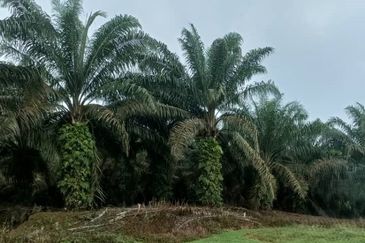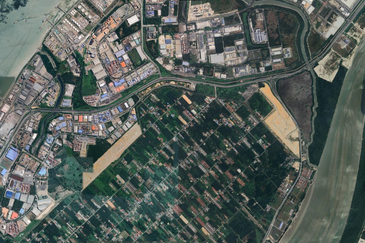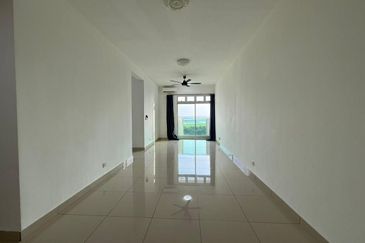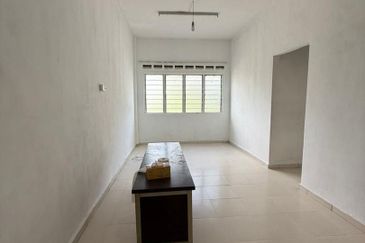
KUALA LUMPUR (March 20): The average yield for Malaysian real estate investment trusts (REITs) is now at its highest since 2016, which may prompt investors to wonder if it’s a good time to place their money in REITs.
According to Bloomberg data, the average dividend yield for the 18 listed REITs on Bursa Malaysia, as of yesterday, stood at 6.14%. In comparison, the 10-year Malaysian Government Securities’ (MGS) yield has been held at 3.9% to 4% since Bank Negara Malaysia’s key rate hike in January. MGS is the typical benchmark to which investors use to compare REITs, which are seen as a comparatively riskier investment.
But analysts told The Edge Financial Daily the rising average REIT yield is more reflective of a decline in share prices, rather than being driven by growth in distribution per unit (DPU). Hence, investors seeking to buy on weakness should consider REITs on a case-by-case basis.

Indeed, all 18 Malaysian REITs have seen their share price slide from the start of the year, declining at a rate of between 3% and 44%, save for Atrium REIT, which has held steady at RM1.09 (as at yesterday’s close).
CapitaLand Malaysia Mall Trust (CMMT) — notable for managing Penang’s Gurney Plaza and The Mines in Seri Kembangan — has sunk 44.2% year to date, from RM1.78 on Dec 29 to 99 sen yesterday. Its last closing price was merely one sen above its initial public offering (IPO) price back in 2010, giving it a current yield of 8.24%, the highest among its peers.
However, despite the attractive yield amid lower entry price points now, analysts are advising caution, given the rising interest rate environment and tough market conditions. Generally, a 25-basis-point (bps) increase in the overnight policy rate (OPR) means asset managers will have to produce 0.25% more in terms of yield to stay attractive to investors.

This is because theoretically rising interest rates could weigh on REITs’ share prices as yield spreads against the 10-year MGS narrow, said CIMB analyst Liyana Fuad in a sector note dated March 12. But Liyana also pointed out that in the past five years, there has only been a minor correlation of about 20% between the two.
“For stocks which have already seen a DPU contraction and an even faster decline in share price, it typically means that a further deterioration can be expected.
“In that case, it is not too recommendable to enter at this point, unless it is a strong name undergoing temporary pressure, such as Pavilion REIT,” a local analyst who declined to be named said when contacted.
Kenanga Research named CMMT its preferred trading pick due to the latter’s attractive valuation at current levels, with a target price of RM1.35.
“We believe CMMT’s share price decline has been overdone, retreating below its IPO price. But we like CMMT as it commands an attractive total return with a gross yield of 8% currently, even post-accounting for foreseeable downside risk,” said Kenanga Research’s analyst, Marie Vaz, in a March 18 note.
In January, Bank Negara Malaysia (BNM) raised the OPR for the first time in four years, by 25bps. The US Federal Reserve, meanwhile, is projected to raise interest rates by three or four times this year.
“It seems that investors are not expecting DPU growth to be as fast as the interest rates’. DPU growth has got to be more aggressive, or at least catching up with the rate hikes, but that is not the case for most of the REITs it seems,” Areca Capital Sdn Bhd chief executive officer Danny Wong Teck Meng said.
It very much depends on each individual’s portfolio and risk appetite, but Wong thinks short-term investors may prefer to wait for a lower entry point if they believe interest rates are to be revised upwards again.
On the other hand, if the DPU is expected to be sustainable, or there is growth along the way, it then presents a good opportunity to buy in, according to most analysts. While REITs are stressing over the generation of attractive yields, oversupply remains a concern this year, according to Kenanga Research’s Vaz, but added that REIT managers with landmark assets may be off the hook.
“Quality REIT managers such as CMMT and Axis REIT, which have smaller asset sizes, stand a better chance at tenant retention on facilities management, asset-enhancement initiative abilities and tenant mix, particularly for retail, as these MREIT (Malaysian REIT) managers actively engage their tenants to create vibrancy for the retail business,” she said.
Kenanga Research has chosen MRCB-Quill REIT as its preferred “long-term pick” with a target price of RM1.30, given its stable asset profile and attractive dividend of about 7.9% currently.
This article first appeared in The Edge Financial Daily, on March 20, 2018.
For more stories, download EdgeProp.my pullout here for free.
TOP PICKS BY EDGEPROP

Bukit Jelutong Industrial Park
Shah Alam, Selangor
























